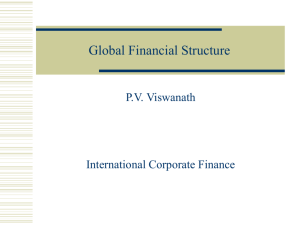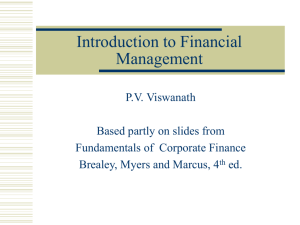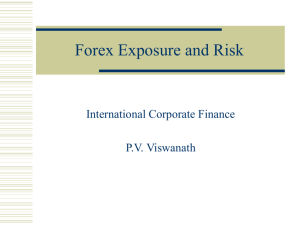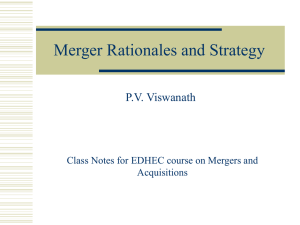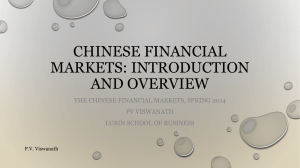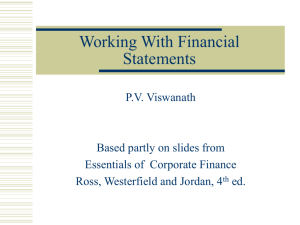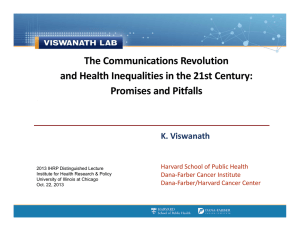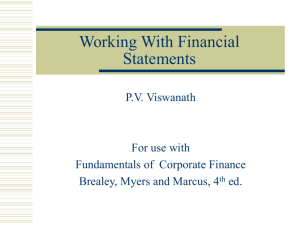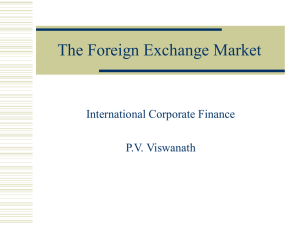Risk Management
advertisement
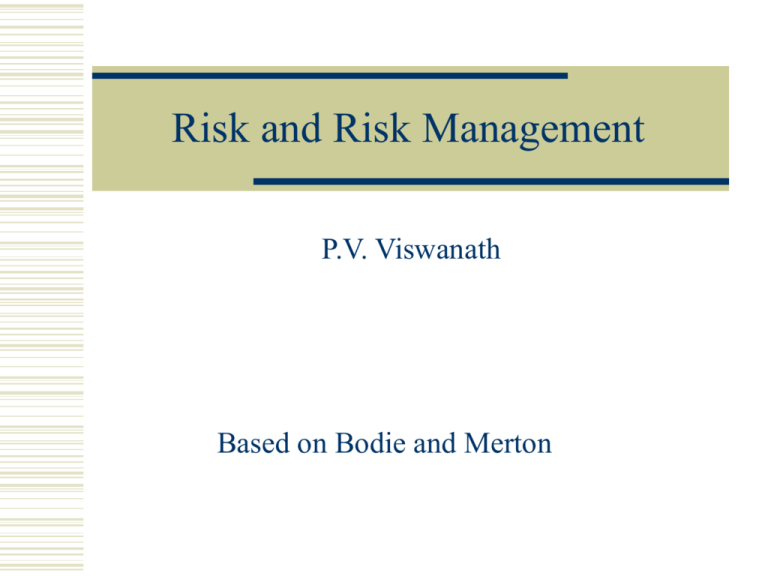
Risk and Risk Management P.V. Viswanath Based on Bodie and Merton Uncertainty and Risk Uncertainty exists whenever one doesn’t know what will happen in the future Risk is uncertainty that “matters” because it affects people’s welfare. People are exposed to risk because they hold an asset or because they have agreed to engage in a transaction. Risk aversion is the desire to avoid exposure to risk. People who are risk averse are willing to pay to avoid exposure to risk. P.V. Viswanath 2 Risk Management Risk Management is the process of deciding on the costs and benefits of avoiding risk exposure and deciding on the optimal amount of risk exposure. The appropriateness of a risk-management decision should be judged in the light of the information available at the time the decision is made. For example, if you bought theft insurance for your car and your car didn't get stolen during the policy period, that doesn't make the insurance purchase a bad decision. Similarly, if you bought a lottery ticket, and your ticket won, that doesn't make the lottery ticket purchase a good one. The riskiness of a particular asset or transaction must be evaluated in the context of all other assets and transactions that the decision maker is involved in. P.V. Viswanath 3 Business Risks Production Risk Risk that machines will break down Deliveries of raw materials will not arrive on time Workers will not arrive on time New technology will make the firm’s equipment obsolete Price risk of outputs The risk that output prices will change because of change in consumer preferences or competitor actions. For example, decreased foreign demand could reduce output prices. Price risk of inputs The risk that input prices will change because of increased demand. Interest rates could rise and make capital costlier. P.V. Viswanath 4 Techniques for Risk Reduction Risk avoidance A conscious decision not to hold the asset or engage in the transaction that generates risk exposure Loss prevention and control Actions taken to reduce the likelihood or severity of losses; e.g. checking equipment regularly. Risk Retention Consciously absorbing the consequences of the risk exposure. Risk transfer Selling the risk to others; e.g. buying insurance or credit default swaps. P.V. Viswanath 5 Three Dimensions of Risk Transfer Hedging An action taken to reduce one’s exposure to a loss also causes one to give up the possibility of a gain – futures contracts. Insuring Paying a premium to avoid losses; buying insurance or options Diversifying Holding similar amounts of many risky assets instead of concentrating on a single one; limiting exposure to any single asset. P.V. Viswanath 6 Factors affecting efficient risk allocation Transactions costs Costs of establishing and running institutions such as insurance companies or securities exchanges and the costs of writing and enforcing these contracts. Incentive Problems Moral Hazard Occurs ex-post; sellers of risk will take suboptimal actions. Adverse Selection Occurs ex-ante; sellers of risk will not reveal the full nature of the risk that they want to sell. P.V. Viswanath 7 Securities used for Risk Transfer Futures Contracts Forward Contracts Options Contracts Debt Equity Credit Default Swaps Interest Rate Swaps Commodity-linked bonds P.V. Viswanath 8
